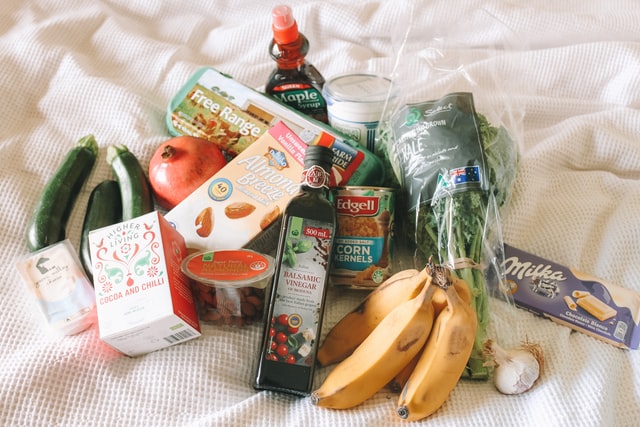Healthy eating is an important part of living a healthy lifestyle and can also help you get improved rates for life and health insurance. The benefits of eating healthy are numerous and include better health, improved energy, and increased longevity.
Traveling and vacationing can be an obstacle in your attempts to make good eating choices, but it is also easy to make good choices while away from home.
Smart eating tips for travel and vacations include planning ahead for meals and snacks and planning ahead to make healthy choices in restaurants. Other strategies include enjoying fruits and vegetables often and indulging in treats occasionally.
If you find yourself getting off track during vacation, set goals to get back to your healthy eating habits and physical activity routine after you are back home.

Planning is Key for Healthy Eating
One important strategy to eat healthy while traveling is to plan ahead. Planning to have plenty of healthy snack options while traveling can make it less likely you will pick up unhealthy snacks high in sugar, fat, or sodium. Planning meals and grocery lists can ensure you are preparing smart meals and snack options for everyone on your trip.
Be cautious while traveling with fresh foods because some locations may have travel restrictions with food items. Do your research before traveling with fresh foods, especially internationally.
There are plenty of healthy foods that do not need to be kept cold. Your grocery list should include bottled water, whole-grain cereal, whole-grain crackers, nuts, dried fruit, peanut butter/nut butter, packets of tuna, jerky, applesauce, apples, and bananas.
Bringing a reusable water bottle can be much easier and cheaper than bottled water when you are traveling on a plane. Bottled water can be convenient when you will not have an opportunity to refill them like when traveling by car.
Protein bars can be an easy snack, but read the nutrition label to make sure they do not have a lot of added sugar. Some protein bars can be candy bars in disguise. One tip for understanding added sugar on nutrition labels is to divide the grams of added sugar by four. This will give you the amount of sugar in teaspoons, which makes it easier to visualize.
Perishables like low-sodium deli meat, string cheese, low-fat milk, low-fat yogurt, hummus, sliced fruits, and sliced vegetables can be kept in a cooler. Frozen ice packs can keep these items cold until you eat them or until you have access to a refrigerator.

Prepare Meals On Your Own When You Can
If you are staying in a hotel or condo with a kitchen, it is easy to prepare meals on your own. Plan your meals ahead of time, make a list, and hit the grocery store to pick up your foods and drinks.
Meals cooked in a kitchen can be simple and should incorporate plenty of fruits, vegetables, lean protein, low-fat dairy, and whole grains. This is also a great way to save a little on your vacation budget.
Breakfast and lunch are easy meals to prepare with a kitchen or even a few amenities. Oatmeal can easily be cooked in a microwave. Add a sliced banana or yogurt for a tasty and healthy breakfast.
Lunch can be a packet of tuna, whole grain crackers, carrots, hummus, and string cheese. You could also have vegetable soup with a low-sodium deli turkey sandwich on whole-grain bread for a quick and easy lunch meal.
Eating Healthy in Restaurants
It can be challenging but not impossible to make good food choices while eating out at restaurants. If you are staying somewhere with a kitchen, it is nice to also plan a few meals to be eaten at restaurants. Online restaurant menus and nutrition information will be your friend when deciding where to eat.
Use online menus, nutrition information, and websites to find restaurants that have healthy options ahead of time. Some restaurants may be designated as having numerous options for health-friendly meals and snacks.
Vegetarian and vegan restaurants can have meatless options that may include plant-based protein or a variety of plant foods. Seek out restaurants that have a variety of offerings that include fruits, vegetables, lean protein, low-fat or fat-free dairy, or whole grains like oatmeal, brown rice, quinoa, or 100 percent whole-wheat bread.
A healthy meal at a restaurant should include some type of lean protein (fish, chicken, turkey, or lean red meat), fruit or vegetables, and whole grains. Choose water, unsweetened tea, plain coffee, or low-fat milk as your main beverages.
Limit processed foods like french fries, chips, white rice, creamy salads, and desserts. Save these foods as an occasional treat. Try a baked potato or a side of vegetables instead of french fries or chips. Fruit always makes a tasty dessert.

Enjoy Fruits and Vegetables at Every Meal
Make a commitment to eat fruits or vegetables at every meal. A rainbow of colorful fruits and vegetables is a great way to get a variety of nutrients with few calories. Fruits and vegetables have plenty of fiber, which also helps keep you full longer and is helpful when traveling.
Many whole fruits and vegetables can be transported without being kept cold. Sliced fruits and vegetables will need to be kept in a cooler or refrigerator to ensure freshness and for best quality.
Start your day off with a banana, berries, or an apple. Add some oatmeal, yogurt, or cereal for a well-rounded breakfast. For lunch or dinner, add a colorful side salad or an extra side of vegetables. Great snack options are carrots with hummus, apples with peanut butter, or berries with yogurt.
Indulge in Unhealthy Foods in Moderation
There is nothing wrong with indulging in treats while on vacation or while traveling. Just enjoy these treats in moderation instead of daily. Plan for an occasional dessert or trip to the ice cream shop to get your treats.
Try to eat healthy at least 80 percent of the time and allow for treats less than 20 percent of the time. Focus on unprocessed and whole foods. Fruits, vegetables, lean protein, whole grains, beans, nuts, seeds, and low-fat dairy over sugary desserts, processed snacks, and fried foods are great options.
Get Back Into Healthy Eating Routines After Vacation
If you got off track during vacation by eating too much or eating out too often, don’t beat yourself up about it. Just make a plan to get back on track after your vacation is over.
If you know you will indulge more than normal on vacation, make sure you plan some exercise and physical activity during your trip. You can use the hotel gym or plan to do a hotel workout on your own with minimal equipment.
These tips can help you keep up with healthy eating while traveling. Plan ahead for your meals and snacks but also plan to include some indulgences while you are on vacation.
About the Author
Melissa Morris writes for the life insurance comparison site, EffortlessInsurance.com. She has a master of science degree in exercise science. Melissa is an ACSM certified exercise physiologist, and an ISSN certified sports nutritionist.





